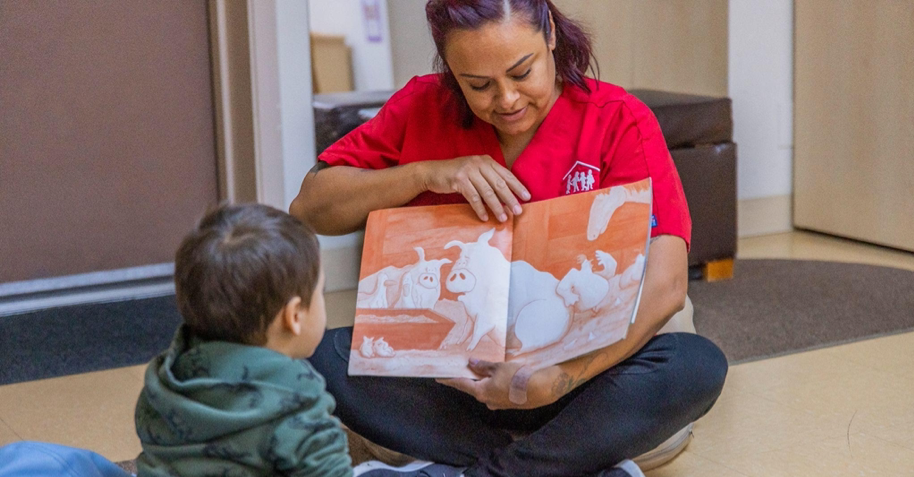Whether you work with infants, toddlers or preschoolers, you have the power to share the joy of reading with the children in your care. This means more than having children’s books in your setting. Don’t get us wrong, having books is important, but how you use books makes a world of difference. Positive story times help set a foundation for children’s success in learning and help build strong connections between you and the children in your care.
Read on for six tips to help create positive reading experiences for the young learners in your care.
Set a positive atmosphere
Reading times that are comfortable and inviting help children develop positive feelings about reading. During reading times, make sure the children have a comfortable place to relax, stretch out and listen. Consider your positioning and how you’re holding the book. Can children easily see the words and pictures? Foster community and conversation by encouraging children to make comments about the story.
Express yourself
The way you read with children can make stories come alive and capture children’s interest. Adjust the tone of your voice and use different facial expressions during read-alouds. Don’t be afraid to make silly voices and sounds, and express your excitement as you read!
Provide freedom to come and go
Give children the option to join book times based on their interests. Allowing them to come and go fosters a positive association with reading. By allowing choice, reading becomes a fun option rather than a chore.
Read informally
While planned story times can be great, include less formal experiences too. Watch for children showing interest in books during free play. When they do, take advantage of the chance to read with an individual or small group of children. Encourage children to select their favorite stories from a variety of books. Re-read children’s favorite stories. These one-on-one and small group reading times allow you to really engage a child’s attention and make the most of your reading time together.
Get children involved
Encourage children’s participation and active engagement with books. This keeps them focused and getting the most out of the experience. A few ideas:
With infants:
Help them touch and pat the pages of board books and lift-the-flap books.
With toddlers:
Encourage them to hold books, turn pages, point to and name objects. Point to the pictures and invite children to do the same. Talk about what you see in the pictures, connecting the pictures with words that may be new to the children.
With preschoolers:
Have conversations about the stories. Ask open-ended questions to get the dialogue going. Point to pictures, invite children to share what they notice and what they think about what’s happening in the story.
Point to words
While reading aloud, point to printed words with your finger. This helps children build and understand the connection between printed and spoken words and models the process of reading left to right.
Most of all, allow yourself time to slow down, relax and experience the joy of reading with the children in your care. As you do, you’ll notice children following your lead and engaging with books. Take a moment to recognize you’re giving a priceless gift that will benefit children now and the rest of their lives.
Resources for Families
Share free reading resources with the families of the children in your care to keep the love of reading going strong. Here are a few resources to get started:
- Family resource centers: Families can bring children, take classes and workshops on parenting, early literacy and more. Search here to see if there’s a center near you.
- Dolly Parton’s Imagination Library: If available in your area, families can sign up to receive a free children’s book in the mail each month. Check here for availability.
- Unite for Literacy: This free online library provides children’s books that are culturally relevant and can be narrated in over 50 languages. Check it out.
- Libby: Families can download free books to a Kindle, tablet or smartphone through local libraries using the Libby app. Learn more.
- The local library: Visiting the library is a great way to encourage a love of books and reading. Families can borrow children’s books and participate in free story times and early learning activities. Find your local library.
At Quality First, we love to hear from you. How do you foster a love of reading in your setting? Email us at QualityFirst@FirstThingsFirst.org
